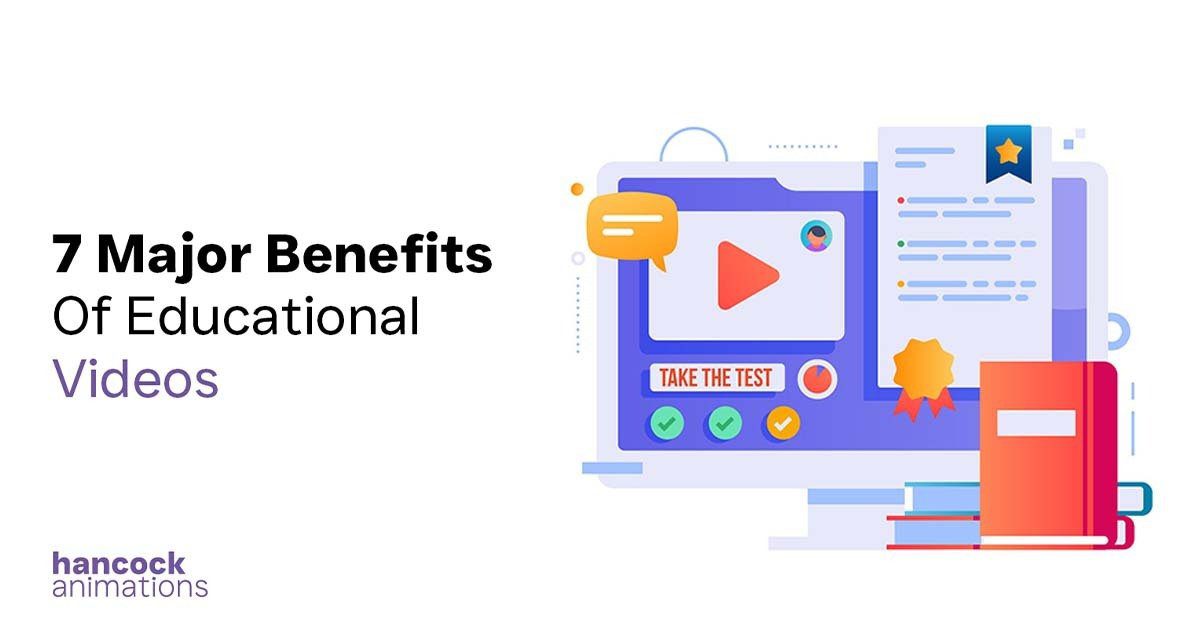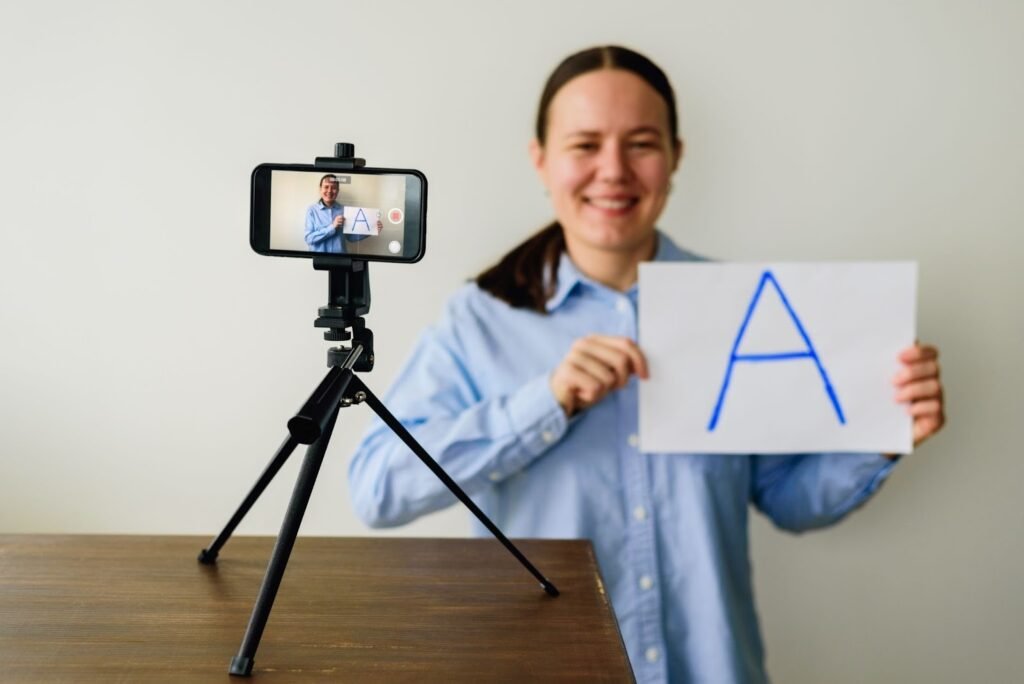7 Major Benefits Of Educational Videos

Today, digital media has expanded its reach in almost every sector. With that, video content has made its way into the business world and is there to entertain you and assist you with your queries. The same goes for the education system.
Nowadays, students leverage the benefits educational videos to learn everything they want, from basic tasks, such as boiling water, to advanced hacking skills. It is all available over the internet.
Schools have also changed their education system. Their reliance on paper and handbooks has shifted to video and digital content.
This all was introduced during the year 2020 when the world stopped, and schools had to find a way to provide education to the students. Let us face it, this trend is not going anywhere anytime soon.
Many people believe that using short video clips helps people learn and remember things better. Videos have pictures and sound, which makes it easier for everyone to understand and remember information. So, in simple terms, videos are great at teaching.
Educational videos have helped the education system evolve as a whole. There are several benefits of video in education.
For example, previously, if a student missed a class, they would have missed the whole lecture, but now the teachers record their lectures and post it on the portal so students can easily access them later and go through the whole thing again if they want to.
But if you still think that using video in education is not a good idea and students should go to the standard text style learning, then we are here to change your mind. In this blog, we shall be discussing the benefits of educational videos and why they are important. So, let us get started.
So, let’s have a look at the benefits of educational videos.
What Are The Benefits Of Educational Videos?
Using video in education can help enhance the learning experience and improve the understanding of each topic. Here are some of the benefits of educational videos:
1. Visual Representation Of Ideas
It is easier for people to replicate and follow the instructions when you show things visually. For example, instead of just talking about how gravity works, you can show it by dropping an apple from a high place to show it.
When you can explain an idea with pictures, it is important to make a good online course. It helps learners have that “aha!” moment when they really understand the concept.
Videos can also show how not to do things. For example, if you want to teach a salesperson how to make a sales call, you can first show them some funny mistakes, like “bloopers.”
After that, you can show the right way to talk to a customer. This helps people remember the right way to do things and reminds them when they are about to make a mistake.
2. Engaging Content For Learners
68% of people like to learn about something new, like a product or service, by watching videos. Videos are a fun way to get and keep people’s attention. A good video can make sure people watch it to the end.
Videos can also make people feel strongly and emotional when they watch them. Even in online learning, using videos with pictures can make people connect more with the content and remember it better. If videos are made well, they can make it easy to explain things in a short time.
Our brains are well-suited for videos. They process pictures faster than text, and most of the information our brains get is through what we see. So, people can understand and remember things better through videos than text.
3. Builds A Connection With The Viewers
A carefully planned video can make your audience interested in what you are saying and teaching. When you talk to the camera and connect with your viewers, it can make them put all of their attention into what you are saying.
Think about a show that you like, such as cooking or a reality show, where the host talks to you directly. When you create this kind of content for your viewers, it helps them connect, trust, and believe in your expertise.

4. Various Visual Types In One Frame
Our brains naturally focus on movement and sound. Videos allow you to both show and explain things simultaneously.
You can use e-learning videos along with graphs and short lists to make important points even clearer. Adding some pictures that emphasize the main ideas will help your users remember the lesson better.
People tend to remember videos that have a story instead of just facts. Videos help you explain and show things, which makes it easier for people to understand and remember what you’re teaching.
You can also make your videos funny, like adding silly sounds when someone makes a mistake, to keep the audience interested and amused.
Adding music to your videos makes them more emotionally engaging. Even if your video is about things like case studies or making sales calls, if it makes your audience feel something, they will most likely remember the information and understand it better.
5. Visual Representation Of Difficult Steps
For certain ideas and tasks, it is easier to demonstrate how to do them with pictures and explanations rather than just writing down the steps on paper.
Take the example of folding a fitted shirt in a clothing store. It is much simpler to show and explain each step than to give employees written instructions on paper, especially for the tricky parts.
Using graphic videos works best for some ideas that are hard to show in person, like abstract concepts. However, it is important that the animations are done well and by an expert animator.
If they are not good, they can make your audience lose focus on the main idea and make your online courses look unprofessional. This is why, if you are looking for a good animation studio, we suggest you connect with Hancock Animations.
Using videos to teach abstract concepts is like taking your audience on an exciting journey where they can see how the idea works rather than just talking about it.
Think about the gravity example we talked about earlier. It is a better idea to use a video to show how it works instead of just talking about it or dropping apples while you talk. Video makes explaining abstract ideas much more effective and interesting.
6. Easily Accessible To A Larger Audience
Some people struggle to understand things when it comes to reading. For instance, those with ADD might read a lot but not remember what they read because they get distracted.
People with dyslexia or who are not native English speakers might also find it hard to read and would need a mix of visuals and text to understand the concept. Many learners just like to learn in different ways, so it is a good idea to use videos in your online training to help them.
Even if people like to learn by doing things themselves, they can also see the benefits of using video in education. Watching a video makes it easier for them to copy the steps for a task.
For example, in a clothing store, videos that show how to fold sweaters, shirts, and trousers can quickly teach new employees the right way to do it. They can watch the video, see how it’s done, and then practice it themselves.
7. Suited For All Sorts Of Devices
Not everyone who is learning from your online courses uses a computer. Some use their phones or tablets during their daily travels, and others switch between different devices.
For employers who use videos for training new employees or ongoing education, giving employees a link or a DVD of the video lets them complete the training on their own time instead of gathering everyone for a group training session.
People can watch video courses on various devices, like a TV or a smartphone. Offering these options makes it more convenient for users to finish the course in a way that suits them.
Benefits Of Video In Education For Institutions
- Videos can help with marketing and communication by reaching more people through your school’s website, emails, ads, and social media.
- Using videos for teaching is better because it allows all staff to access information at their own pace and review it anytime.
- Recording campus events for live or on-demand viewing can make parents, students, and alumni feel more connected to the school, leading to positive feedback and engagement.
- Offering more online courses can attract a diverse group of students, making your school more appealing.
- Integrating videos into your school’s learning system can provide additional resources for both students and teachers.
- Using videos to make the campus more accessible can create a positive image, attracting potential students and improving recruitment.
- Schools using videos for learning often see higher grades, especially when students watch video modules before exams, resulting in a good return on investment.
Benefits Of Watching Educational Videos For Students
- Videos are more interesting because you can see and hear what is being taught, just like in everyday conversations.
- They can be watched from anywhere with an internet connection, using devices like laptops, tablets, and smartphones, so you can learn in your own time and place.
- You can stop and replay videos as many times as you need, which helps you remember what you learned.
- Videos are helpful for all subjects, especially complex or visual topics like step-by-step instructions, solving problems, or science and math formulas.
- Watching videos also improves your skills in using technology and communicating in the digital world, which is important for life in the 21st century.

Benefits Of Educational Videos For Teachers
- Videos make students more interested in learning, and this can lead to better results.
- They allow for flexibility, so you can stop, go back, or skip parts of the video to discuss things in class or review specific areas.
- Videos help teachers create different learning environments, whether in-person or online.
- Digital videos make it possible for students all over the world to learn from their teachers remotely.
- Some videos have features that help teachers see how engaged students are and how long they watch, helping them understand if the video is effective.
- Students can also use videos to get help or feedback, especially if they can’t attend classes in person.
- Videos change the role of teachers from just talking to helping students learn. They’re meant to make lessons better, not replace teachers or lectures.

5 Reasons Why Educational Videos Are Important
Now that we have covered the benefits of video in education let us talk about why these videos are important. Here are five reasons why educational videos are beneficial:
1. Engagement
Studies have shown that video learning has positive outcomes on multiple levels, including increased motivation and deeper learning, and can specifically impact students’ ability to facilitate discussions and identify problems.
2. Effectiveness
Video learning is effective on both sides of the classroom. Teachers can use it to create time and space for active learning. Once a video is created, it can be reused and updated as needed, leaving more time in the classroom for live discussions and engagement with students.
3. Authenticity
Video engages both the student and educator in a one-on-one relationship without ever being in the same room. A compelling 2016 study by the Online Learning Consortium found that video helped educators build and foster authentic relationships with students.
4. Inspired Thinking
Visual clips combined with audio play a huge role in the understanding and maintenance of new material. Forrester Research analyst James McQuivey claims one minute of video equals approximately 1.8 million written words. Thus, when a video is used in the classroom, students are forced to think critically when introduced to complex content.
5. Video For All
Video can help address this gap in training by allowing both general and special education teachers to teach students at their own pace. Students can rewatch a video multiple times to gain and retain learning material. And captions, for example, enable deaf students to read the video.
Conclusion
Using educational videos the right way can help students understand things better and faster. Interesting videos get their attention and make sure they are focused on what they are learning.
You can use these educational videos to explain difficult ideas in a way that makes people go, “Aha!” Showing and telling how to do something makes it easier to understand. It also helps build a connection with the audience, which makes it easier for them to remember what they learned.
FAQs
The purpose of educational videos is to help people learn and understand various topics more effectively. These videos are created to make learning engaging, clear, and accessible, using visual and auditory elements to explain complex ideas, demonstrate processes, and engage learners. Educational videos are used in schools, training programs, and online courses to enhance the learning experience and improve knowledge retention.
- Engagement: Videos capture and maintain the attention of learners, making the educational content more interesting and compelling.
- Visual Learning: Videos use visual and auditory elements to help learners understand and remember complex concepts more effectively.
- Flexibility: Videos can be accessed on various devices, allowing learners to watch them at their convenience and from different locations.
- Repetition: Learners can pause, rewind, or rewatch videos as needed, which aids in understanding and retention of information.
- Accessibility: Videos can be used for remote learning, enabling educators to reach a global audience, and they often come with analytics to track student engagement and progress.
It depends on individual preferences and content. Videos often offer visual and auditory engagement, making complex concepts easier to understand. However, reading allows for personal pacing and deeper reflection. The choice between video and reading depends on the audience and the content’s nature.

